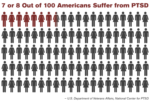Advertise Follow Us
American Farriers Journal

View Archived Issues
January/Februrary 2021
Volume: 47
Edition: 1
American Farriers Journal is the “hands-on” magazine for professional farriers, equine veterinarians and horse care product and service buyers.
-
Table Of Contents
Table Of Contents
Bridge Analogy Improves Forging
Knowledge of how steel reacts to supported and unsupported hammer blows is the key to shaping horseshoesRead MoreShoeing for a LivingShoeing Hunters and Jumpers before a Show
New York farrier Justin Galli says going with the flow is crucial when show schedules have been disrupted by COVID-19Read MoreWhy Horse Owners Tell Farriers… “You’re Fired!”
It’s more than just the feet, as professionalism and business management practices are also a major concern when owners decide to change farriersRead MoreHow Do You Choose the Appropriate Horseshoe?
Work, intensity, duration, terrain and horse are the five considerations farriers should consider when selecting footgear for a horseRead MoreUse Calipers to Improve Efficiency and Accuracy When Punching Nail Holes
Measurement tools can aid farriers in everyday work and competitionRead MoreShoeing to Support Fetlock Joints Affected by Tendon and Ligament Injuries
Changes in hoof orientation relieve stress on the flexor tendons and suspensory ligamentRead MoreBadass Rigs & TrailersShoeing Saddlebreds
Farrier Paul Human shoes Saddlebreds more efficiently thanks to his shoeing rigRead MoreSeeing the Invisible Illness
Post-traumatic stress disorder doesn’t have to rule your life, damage your career or define your identityRead MoreFootcare Fit for a Farrier
Proper shoe selection will enable hoof-care professionals to improve posture and reduce painRead MoreUnderstand Breakover and the Implications of Manipulating it
Definitions vary among hoof-care professionals, but improperly influencing it can produce significant problemsRead MoreResearch Journal: January/February 2021
“The information, ideas, and opinions expressed are those of the author and do not necessarily represent those of the United States Department of Agriculture."Read More -
Featured Articles
Featured Articles
Bridge Analogy Improves Forging
Knowledge of how steel reacts to supported and unsupported hammer blows is the key to shaping horseshoesRead MoreShoeing for a LivingShoeing Hunters and Jumpers before a Show
New York farrier Justin Galli says going with the flow is crucial when show schedules have been disrupted by COVID-19Read MoreShoeing to Support Fetlock Joints Affected by Tendon and Ligament Injuries
Changes in hoof orientation relieve stress on the flexor tendons and suspensory ligamentRead More - Digital Edition
-
Online Extras
Online Extras



















